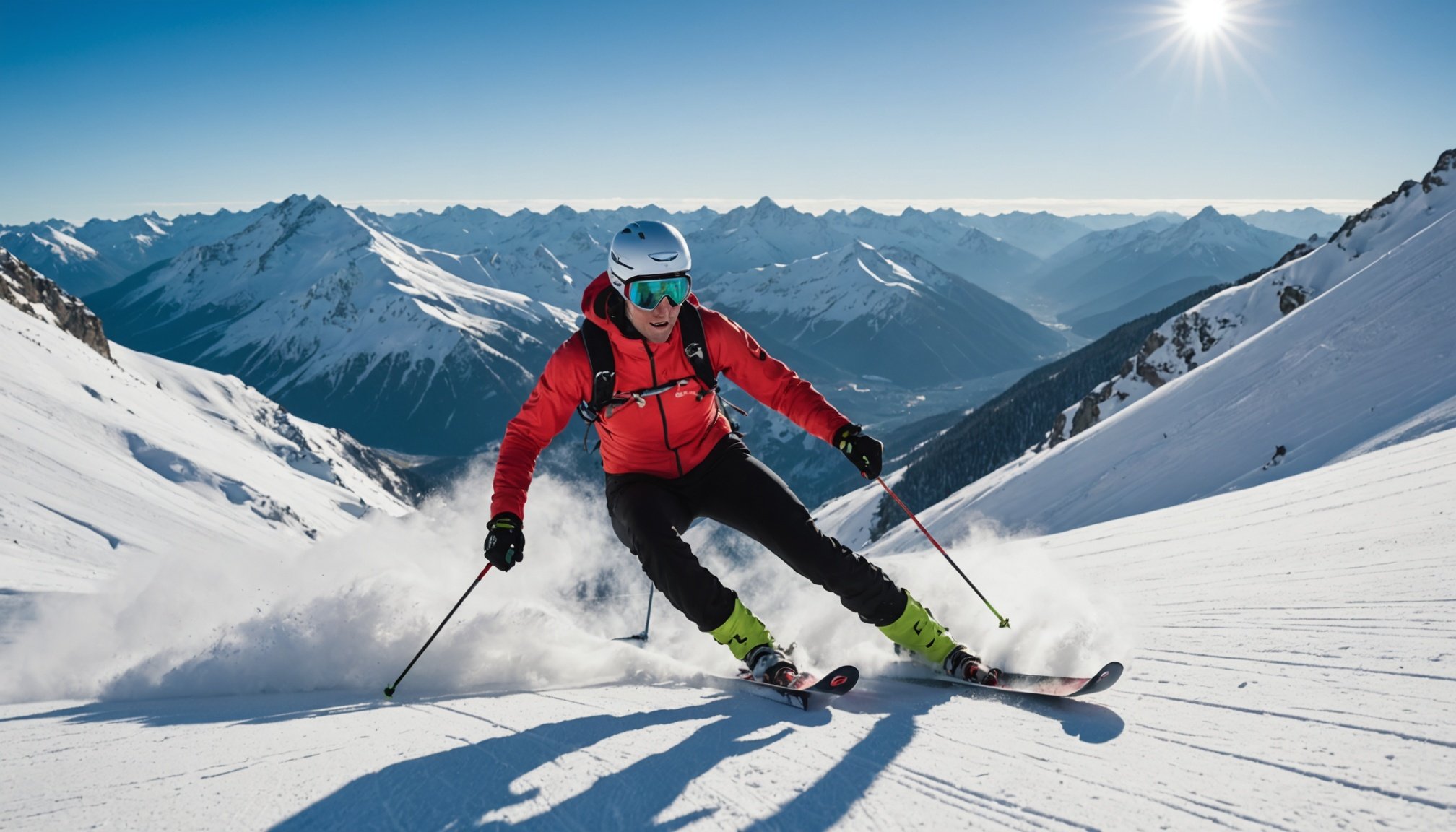Importance of Breathing Techniques in High-Altitude Skiing
In high-altitude skiing, where air pressure and oxygen levels are significantly lower, breathing techniques play a crucial role in optimising performance. The body’s ability to effectively manage oxygen intake directly influences high-altitude performance. Skiing at such altitudes can quickly lead to fatigue if oxygen isn’t adequately supplied to the muscles. Proper breathing techniques ensure that oxygen levels in the bloodstream remain sufficient, facilitating better endurance and skiing skills.
When the oxygen availability is compromised at higher elevations, skiers may experience reduced stamina and heightened tiredness. Mastery of specific breathing techniques, such as diaphragmatic breathing or rhythmic breathing patterns, can dramatically mitigate these challenges. Diaphragmatic breathing, for instance, involves deep breaths through the diaphragm, increasing oxygen flow while decreasing unnecessary energy expenditure.
Also read : Experience ultimate fun with briliantz gel blasters today!
Additionally, these breathing methods can lead to a more efficient skiing experience by reducing fatigue. Managed breathing ensures a steady supply of oxygen, helping skiers maintain focus and physical control. This elevation in focus and endurance not only enhances overall skiing proficiency but also contributes to a more enjoyable and safer skiing adventure.
Mastering these techniques can transform high-altitude skiing, allowing skiers to optimise their body’s oxygen use and maximise their performance.
Additional reading : Unlocking Athlete Performance: The Role of Continuous Heart Monitoring Devices in Predicting Overtraining
Overview of Periodic Breathing Techniques
Periodic breathing is a respiratory pattern characterized by cycles of increasing and decreasing tidal volume, separated by periods of reduced or absent airflow. These cycles naturally occur during sleep but are increasingly being adopted in active environments for optimizing performance. The concept revolves around maintaining rhythmic breathing to enhance oxygen delivery and carbon dioxide removal, aiding physical endurance and cognitive function.
Historically, breathing techniques have played a significant role in various disciplines, including meditation, yoga, and sports. The development of periodic breathing as a technique emerged from observations of natural respiratory dynamics. Initially applied in clinical settings to manage sleep disorders, it has found its way into sports and exercise sciences due to its potential benefits in stabilizing blood gases and enhancing physiological efficiency.
In comparison to traditional breathing methods, especially in activities like skiing, periodic breathing offers a structured approach to respiratory control. Traditional techniques often emphasize deep or controlled nasal breathing to counter the altitude’s demands. Periodic breathing, however, provides a cyclic pattern, potentially improving endurance by reducing work of breathing and decreasing fatigue. These methods propose a distinct advantage through their rhythmic and effortless application, offering athletes a tool to advance performance and maintain energy reserves.
Scientific Benefits of Periodic Breathing
Periodic breathing, a pattern often observed in high-altitude environments, offers intriguing physiological benefits. Studies show that this adaptive mechanism assists the body in altitude adaptation by improving oxygen uptake efficiency. As athletes acclimate to settings with lower oxygen levels, their bodies must optimize respiratory patterns for better performance.
This adaptation is particularly important for those engaged in high-altitude activities such as skiing. The enhanced oxygen uptake supports endurance and decreases the risk of fatigue. During periodic breathing, the body experiences cycles of hyperventilation followed by slower breathing, enabling more efficient use of available oxygen. Altitude adaptation becomes more effective as the body acclimates more quickly, preparing athletes to achieve optimal results.
Research indicates that improved oxygenation capabilities directly correlate with increased stamina and performance in demanding environments. For skiers, this means maintaining energy levels across the ski run and navigating slopes with agility. The evidence points to a strong connection between periodic breathing and enhanced athletic performance at altitudes, underscoring the profound physiological benefits that this natural adaptation provides. Such mechanisms underline the importance of understanding and training for altitude challenges.
Practical Applications for Skiers
Enhancing ski performance with effective breathing exercises can be transformative for athletes. To begin, incorporating training techniques requires thoughtful planning. Start with a simple regimen: inhale deeply through your nose, holding the breath briefly, then exhaling through your mouth. Gradually increase the duration of each breath as you become more comfortable. This method can improve lung capacity and stability on the slopes.
High-altitude skiing presents unique challenges due to reduced oxygen levels. Exercises like simulated high-altitude stair climbs or hill sprints can acclimate your body to such conditions. Integrate breath-holding intervals during these activities to further condition your respiratory system.
While skiing, it’s essential to consciously monitor your breath. Rapid, shallow breathing can lead to fatigue. Instead, focus on slow, steady inhales and exhales, particularly during intense downhill runs or difficult maneuvers. Use a wearable fitness tracker with a breathing rate feature to gauge your breath control and make necessary adjustments.
Breath control isn’t just about endurance – it also aids in maintaining mental clarity and focus. Many skiers find that disciplined breathing supports not only their physical performance but also their psychological resilience, enhancing overall skiing experiences.
Testimonials and Case Studies
Real-world applications of periodic breathing techniques have demonstrated tangible benefits across various sports. Notably, skier testimonials provide profound insights into how this approach transforms athletic output.
Several accomplished skiers reported remarkable performance improvements after integrating these breathing strategies. One anecdotal account highlights a skier who observed enhanced endurance and focus throughout competitions. This case vividly illustrates the method’s impact — the athlete maintained consistent energy levels, which translated into faster lap times and fewer penalties.
To further understand these changes, analyses were conducted comparing performance data before and after adopting periodic breathing. Metrics like oxygen consumption and heart rate showed noticeable declines during intense periods, confirming increased efficiency and stamina.
Through interviews, top athletes shared valuable lessons on how these strategies influenced their practices. Key takeaways included adapting breathing techniques to personal needs and incorporating them gradually into daily routines. Tips suggested by seasoned athletes encouraged consistent usage for optimal results.
Such insights not only validate the method’s efficacy but also guide others in harnessing its full potential. Ultimately, these athlete insights serve as a testament to the vital role of breathing techniques in elevating sports performance.
Integrating Breathing Techniques into Ski Training Regimens
Incorporating breathing techniques into ski training regimens can significantly enhance performance optimization. To effectively integrate these methods, skiers should focus on creating a balanced training program that marries traditional ski conditioning with controlled breathing exercises. Consistency is key; athletes should develop a routine where breathing techniques are a consistent part of every training session, allowing for gradual progression over time.
Coaches play a crucial role in this integration by demonstrating and teaching these techniques during practice sessions. They can start by introducing basic breathing exercises and then progressively incorporate more advanced techniques as athletes become proficient. By emphasizing the importance of breathing control, coaches can help athletes harness better endurance and focus, thus optimizing their overall performance.
Moreover, it’s beneficial to track improvements and adjust the training integration as needed. Skiers should be encouraged to use feedback to fine-tune their approach, ensuring that the balance between ski conditioning and breathing practices is maintained. This systematic approach not only optimizes performance but also ensures that athletes can effectively manage the physical demands of skiing, leading to an all-round better experience on the slopes.
Additional Resources and Tools
For those looking to refine their skiing skills, understanding and mastering breathing techniques can be significantly advantageous. A plethora of educational materials is available, covering a wide spectrum of topics pertinent to skiing.
Recommended Articles, Books, and Videos: Numerous well-regarded publications offer insights into the role of breathing in skiing. These materials often delve into methods to enhance endurance and reduce anxiety on the slopes. Videos provide visual guides, offering practical demonstrations of breathing exercises tailored for skiers.
Breathing Tools and Apps: Technological advancements have introduced various apps designed to help individuals monitor and improve their breathing during active sessions. These tools can provide real-time feedback and suggestions for optimizing performance. Apps such as Breathwrk and MyAir have become popular among athletes for their user-friendly interface and comprehensive tracking capabilities.
Workshops and Seminars: Engaging in interactive workshops or seminars can further enrich your knowledge. Many programs focus specifically on breathing strategies for athletes, offering hands-on experiences and expert advice. These events often encompass practice drills, facilitating an immersive learning environment.
Leveraging these resources will foster deeper ski training resources and elevate athletic performance overall.











